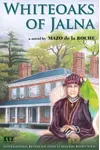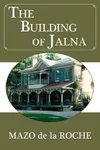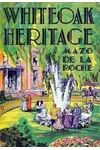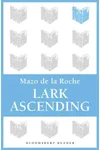Picture a Canadian storyteller who spun a century-long family saga that captivated readers worldwide—meet Mazo de la Roche! Born in 1879, this literary gem crafted the beloved Whiteoaks of Jalna Saga, a 16-novel series chronicling the dramatic lives of the Whiteoak family. With her vivid characters and timeless storytelling, she became one of Canada’s most celebrated authors, leaving a legacy that still enchants.
Despite early struggles, including a psychological breakdown, Mazo’s resilience and imagination propelled her to international fame. Her tales, rooted in Ontario’s lush landscapes, blend romance, drama, and a touch of nostalgia, making her a household name in the 20th century. Ready to dive into her world? Let’s explore her journey!
The Making of Mazo de la Roche
Mazo de la Roche, born Maisie Louise Roche on January 15, 1879, in Newmarket, Ontario, grew up in a family that moved 17 times due to her mother’s illness and her father’s work as a traveling salesman. This nomadic childhood, coupled with the adoption of her cousin Caroline Clement, shaped her longing for stability—a theme that echoes in her work. Mazo began writing early, publishing her first story in Munsey’s Magazine at 23, but a breakdown soon paused her career. With Caroline’s support, she found her footing, moving to places like Acton and Bronte, Ontario, where her experiences fueled her storytelling.
Mazo de la Roche’s Unforgettable Stories
Mazo’s crowning achievement is the Whiteoaks of Jalna Saga, a 16-novel series spanning 1854 to 1954. The saga follows the Whiteoak family, whose sprawling Ontario estate, Jalna, serves as a steadfast anchor amid life’s ups and downs. Her debut, Jalna (1927), won the $10,000 Atlantic-Little Brown Award and sparked a sensation, leading to sequels like Whiteoaks of Jalna (1929) and Finch’s Fortune (1931). Each novel stands alone, weaving tales of love, rivalry, and legacy with characters named after gravestones in a Newmarket cemetery.
Her writing style blends romanticism with vivid, sometimes visceral, descriptions—think children “gnawing drumsticks” with “eyes humid with greed.” Mazo’s stories, inspired by her own dreams and experiences, offer an idealized yet compelling portrait of Canadian life. Beyond Jalna, she penned novels like Delight (1926), based on her time in Acton, and a reflective autobiography, Ringing the Changes (1957), showcasing her versatility.
Why Mazo de la Roche Matters
Mazo de la Roche’s impact transcends her era. The Jalna series, translated into over 20 languages and adapted for film (1935), stage (1936), and television (1972), brought Canadian literature to global audiences. While some Canadian readers sought gritty realism, her romanticized Ontario resonated more abroad, making her a pioneer of the family saga genre. Despite limited academic attention, her commercial success—over 11 million copies sold by 1961—cemented her as a cultural icon. Her ability to craft eccentric, memorable characters like Adeline Whiteoak ensures her stories endure.
- Born: January 15, 1879, Newmarket, Ontario
- Died: July 12, 1961, Toronto, Ontario
- Key Works: Jalna, Whiteoaks of Jalna, Finch’s Fortune, Delight
- Awards: $10,000 Atlantic-Little Brown Award (1927)
Want to step into Mazo’s world? Grab Jalna and immerse yourself in her sweeping family saga!






























